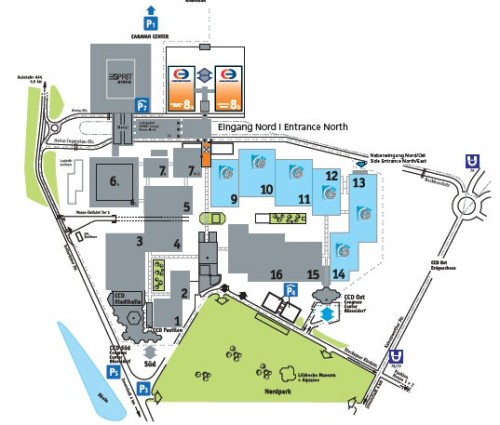
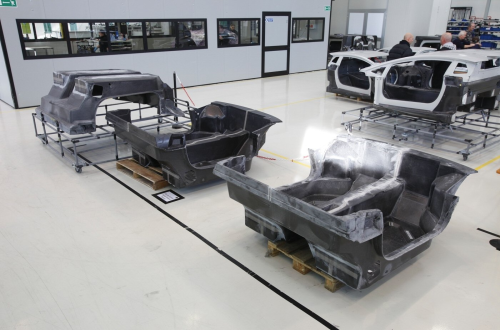
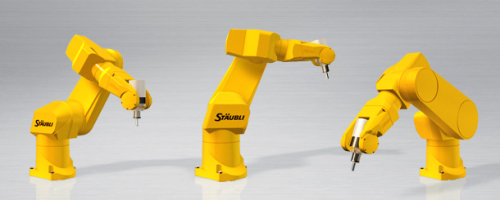

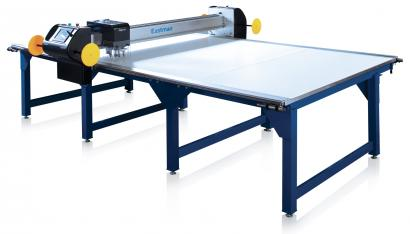
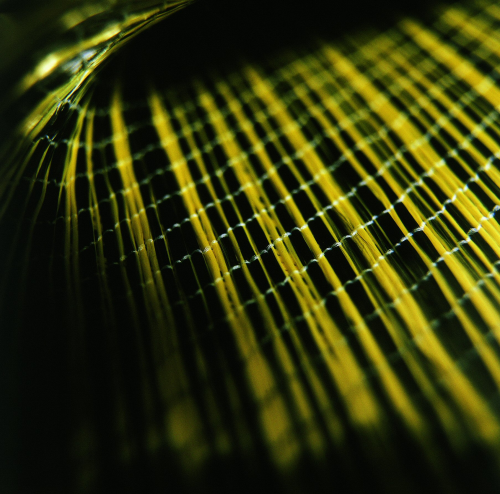
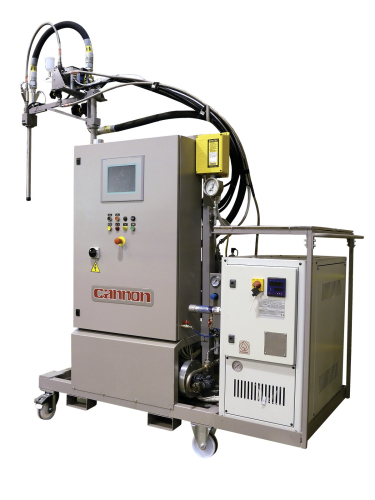
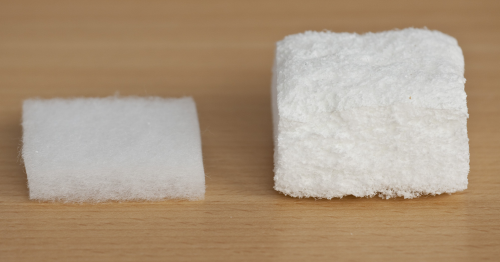
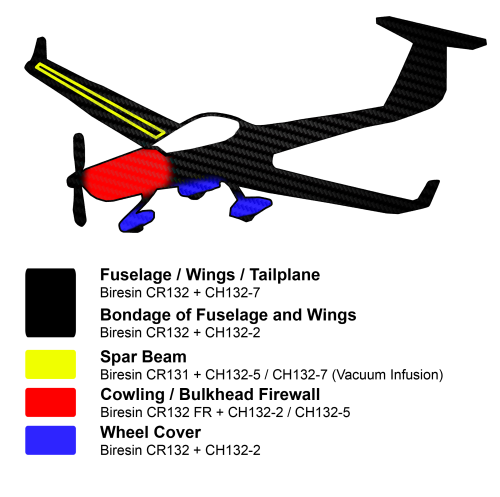
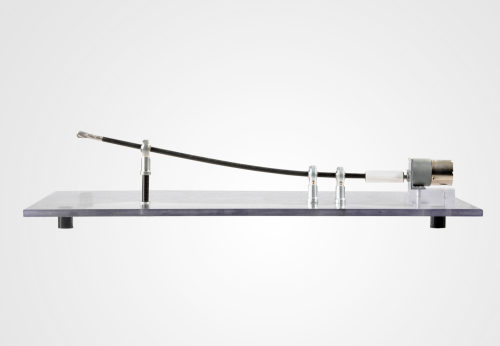

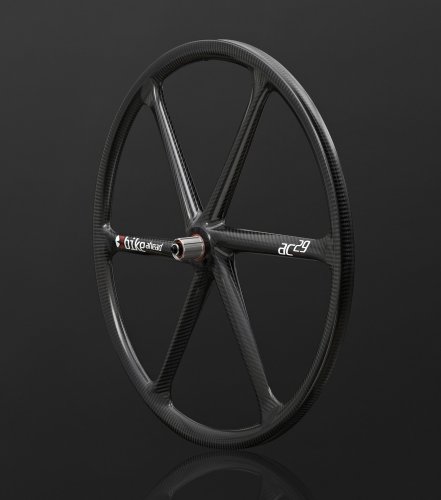
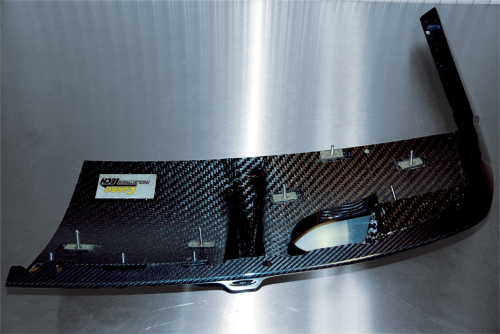
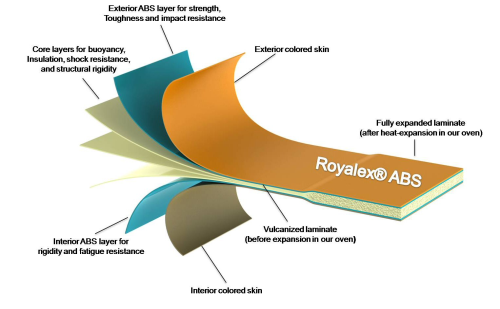
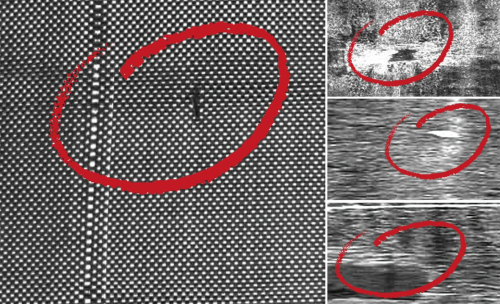
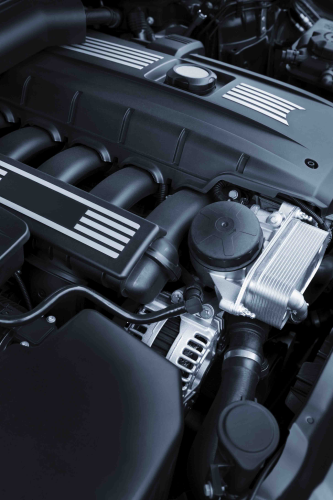
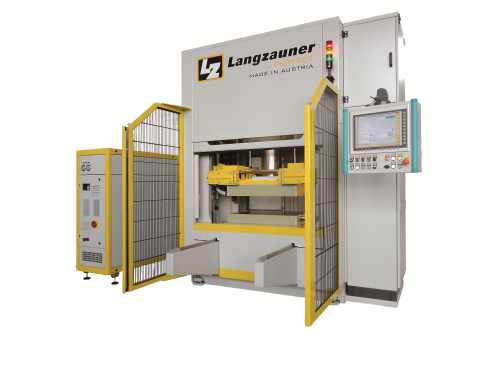
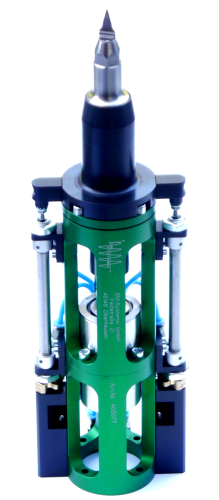
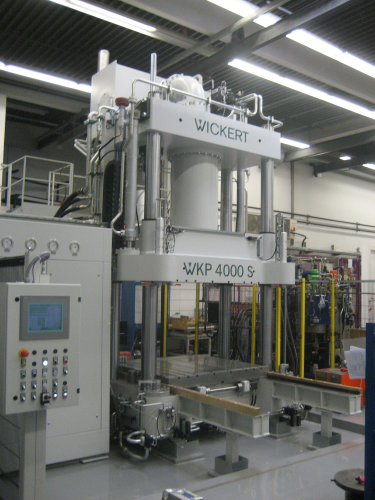
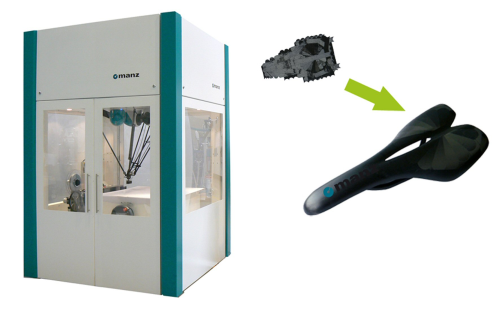

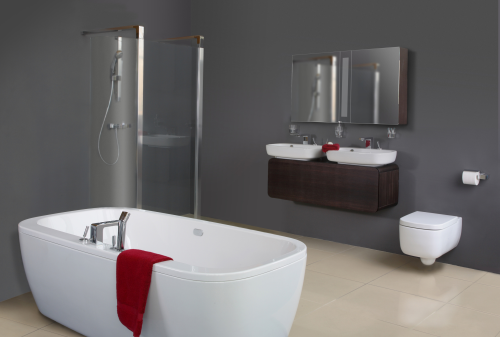
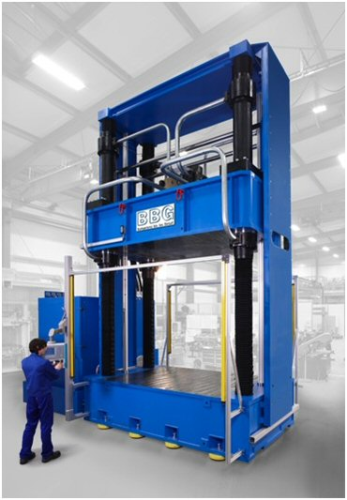


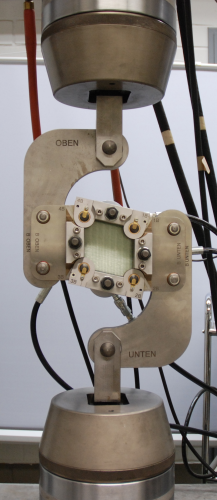
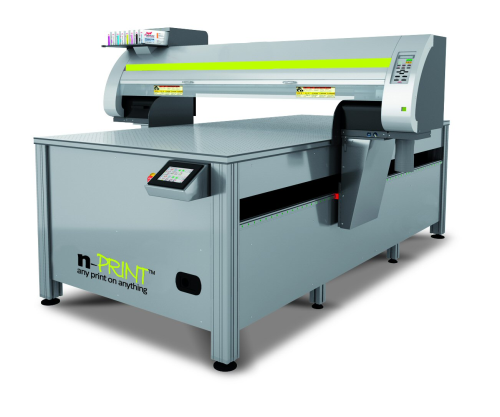
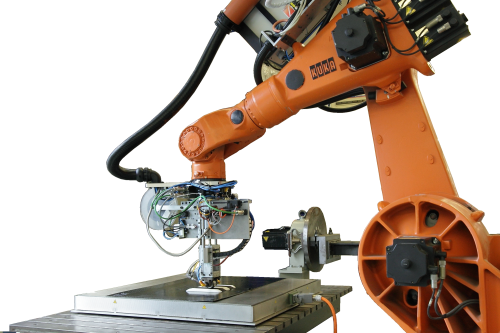
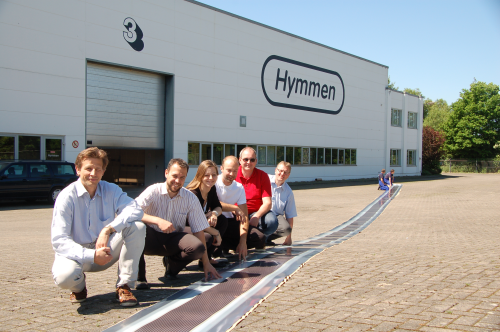
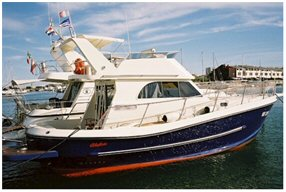
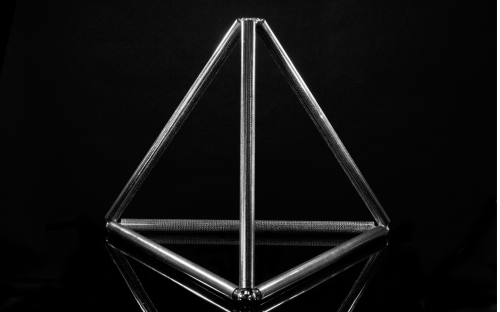
COMPOSITES EUROPE is organised by Reed Exhibitions with the support of the European Composites Industry Association (EuCIA), the American Composites Manufacturers Association (ACMA), Reinforced Plastics magazine, the German engineering association VDMA (Verband Deutscher Maschinen- und Anlagenbau) and German association for reinforced plastics AVK.
The trade show is preceeded by AVK's annual conference on 8-9 October.
350 exhibitors and more than 7000 visitors took place at COMPOSITES EUROPE 2011 in Stuttgart. Around 10 000 visitors are expected in 2012.
In this preview we look at some of the developments on display at the event. (Companies are listed in alphabetical order.)
Airtech Hall 8b Stand D32 www.airtech.lu
Airtech will be highlighting its latest auxiliary products for the vacuum bagging and resin infusion processes, including two new developments in its Airseal sealant tape range:
Airseal 2 ST, a cost effective sealant tape with strong tackiness which provides immediate and excellent adhesion to most surfaces for vacuum bag applications up to 150°C; and Airseal 2 HT Twin, which is ideal for vacuum bagging applications requiring double bagging. The simultaneous application of the two strips of sealant tape saves time, effort and increases reliability of the process.
The company is also introducing its new Dahlpac MC79 vacuum breather pad, which is an easy to use strip material that allows vacuum to be applied over the surface of a composite laminate with no resin bleed out and little part mark-off. It is constructed with Dahltexx SP-2 fabric which breaths efficiently and can control resin flow. Wrapped inside the Dahltexx SP-2 is a breather mesh which provides an efficient air path along the length of the Dahlpac, allowing trapped and residual air to be removed from a laminate before and during infusion.
Airtech has demonstrated the technique of breather strips constructed with Dahltexx SP-2 & Mesh for a number of years, and now Dahlpac delivers the same technique as a single product placement. Dahlpac aids air removal during resin infusion, avoiding dry patches, simplifying infusion strategies and reducing bagging time.
AkzoNobel Hall Stand www.expancel.com
Expandable und pre-expanded microspheres are the focus of the AkzoNobel’s business unit Expancel business unit. These small microspheres, filled with a hydrocarbon, reduce the density of thermosets and composites very efficiently. The product range covers a large variety of expansion temperatures and high temperature resistant properties.
Expancel microspheres help the producers of composites to improve the efficiency of their products significantly comparing to other blowing agents and light weight fillers.
all ahead composites Hall 8a Stand G10 www.all-ahead.de & www.bike-ahead-composites.de
all-ahead-composites specialises in the R&D, construction and production of reinforced plastic parts and components. The company is a spin-off from the University of Applied Science Würzburg, Germany, and was founded in 2011.
The company's bike-ahead-composites brand manufactures high-end bicycle-components out of CFRP. Its high performance carbon composite wheels are specifically developed for off-road conditions. The company says it combines lightweight with a maximum lateral stiffness, resulting in an unmatched stiffness-to-weight-ratio.
all-ahead-composites' current development activities are concentrating on 'inherent non-destructive testing' of composite materials. This technology involves integrating sensors into composite parts without weakening the structure. The company is cooperating with rpr-engineering of Würzburg, which is responsible for the sensor technology. The project has successfully integrated sensors in the carbon composite wheels from bike-ahead-composites, enabling detection of damage to CFRP without expensive NDT methods.
This technology is also applicable to other composite parts.
AOC Hall 8a Stand D39 www.aoc-resins.com
AOC is highlighting its Firepel® K120 FR fire-retardant, halogen-free unsaturated polyester resins. Firepel K120 uses an intumescent technology that meets fire performance requirements and does not require antimony or aluminum trihydrate (ATH).
| When developing Firepel K120, we wanted to utilise halogen-free technologies to create the highest fire-retardant and low-smoke characteristics possible. And because the resin’s excellent performance is achieved without ATH, Firepel K120 has a much lower specific gravity than ATH-filled composites, which makes it easier to process than traditional systems. As an added benefit, tensile properties are higher with K120. |
| Fletcher Lindberg, Business Manger, Open-Mold Reinforced Resins, AOC |
Firepel K120 resin is ideal for use in mass transportation applications. According to AOC, parts using K120 have a potential weight saving of up to 30% compared to standard composites using antimony or ATH.
Firepel K120 exceeds the requirements of mass transportation applications in North America and demonstrates low flame spread, low smoke and excellent smoke toxicity data when tested according to:
- ASTM E162, Standard Test Method for Surface Flammability of Materials Using a Radiant Heat Energy Source;
- ASTM E662, Standard Test Method for Specific Optical Density of Smoke Generated by Solid Materials; and
- SMP 800-C, Toxic Gas Generation.
Initial applications for Firepel K120 are in fibre reinforced polymer (FRP) composites for railcars, buses and vans. Typical candidate components include: cab fronts; nose cones; driver control desks; interior wall panels; exterior cladding; seat shells and tables; handles and head supports; flooring and ceilings; and ventilation ducting.
Firepel K120 is engineered for the hand lay-up and spray-up manufacturing processes.
Armacell Benelux Hall 8b Stand D61 www.armacell-foam-cores.com
Armacell produces environmentally friendly structural PET foam cores for the composites industry. Armacell core material is used in an increasing number of applications in the transportation, marine, building and construction, and wind energy industries. According to the company, more than 10 000 wind turbine blades use ArmaFORM PET today.
At the show, Armacell will be highlighting its PET foam core range:
- ArmaFORM PET AC provides light weight and high mechanical strength in conjunction with residual flexibility and maximum service life;
- ArmaFORM PET FR is designed for the more stringent fire, smoke and toxicity (FST) requirements in the transportation sector and is said to provide best-in-class fire properties in the market for thermoplastic foam cores;
- ArmaFORM PET GR is manufactured from post-consumer recycled PET. A fully recyclable product truly ‘from cradle-to-cradle.’
ASP Plastics GmbH Hall 8a Stand E4 www.asp-plastics.com
ASP Plastics' is highlighting Spartech's 3D-thermoformable Royalex® sheet. Royalex is an ABS laminate with a core of expanded, closed-cell foam. This tough, lightweight sheet is created by laminating core, substrate and surface plies into a single monolithic unit. The core plies are compounded with a chemical blowing agent that expands under heat to form a low density, closed-cell foam core. This core imparts stiffness, resilience and superior shock absorption. The substrate provides strength and high impact and fatigue resistance. The surface ply gives colour, texture, strength and now improved abrasion resistance over previous designs. Royalex is offered in a wide variety of standard or custom colours and is designed for thermoforming.
Royalite sheet is designed for applications which have the most stringent flame and smoke requirements. Royalite is a thermoformable solution available in a wide variety of colours and textures providing further benefits such as high impact strength, easy cleaning and resistance to UV rays, microbial growth and most commercial chemicals. Royalite is suitable for applications in interiors of aircrafts, ships, trains and other mass transit vehicles.
BBG GmbH & Co. KG Hall 8b Stand G30 www.bbg-mbh.com
BBG GmbH & Co. KG, a manufacturer of moulds, machinery and systems, will highlight its expertise on the series production of composite components. The company will provide an overview of the manufacturing technology offered and showcase a range of composite components made by its customers.
BBG is a leader in tools and mould carrier systems for the finishing of glass with polyurethane. More and more systems are used for the series production of components made of composites. Most of BBG's customers come from the automotive and aviation industries and produce air-conditioning and ventilation systems. The exhibits showcase the range of applications. An iPad 3 will be raffled off to stand visitors.
In addition to tools for the manufacturing of composite components, BBG designs and makes end-to-end systems for series production, the heart of which are the company's mould carrier systems. Innovations include the model BFT-P V6, which was developed by BBG for the processing of carbon fibre composite components in automotive engineering. The BFT-R mould carrier systems for the manufacturing of composite components in CSM (Compound Spray Moulding) and LFI (Long Fiber Injection) processes can be used for manufacturing lightweight and stable components, which can be laminated or painted without any problems and can be fitted both in car interiors but also in car bodies.
The systems are also used by the aviation industry. A recent order concerns the production of lavatory walls for aircraft. It comprises a type BFT-U four-column press, which was developed by BBG specifically for the manufacturing of large-surface mouldings made of fibre reinforcedplastic composites, as well as the associated moulds and a retooling system. These systems are used to manufacture lavatory panels in the form of sandwich components with two prepreg surface layers and a paper honeycomb in between.
Cannon Group Hall 8b Stand E15 www.cannon.it
Cannon will show its latest developments in composites, polyurethane and thermoforming technologies.
These include a complete range of epoxy infusion and injection technologies and tools:
- ESTRIM (Epoxy STructural Reaction Injection Moulding) technology for the replacement of the conventional, slow RTM process with fast-demoulding high-pressure injection of epoxy resin formulations is now available in two new versions, Spray (SL) and Liquid Laydown (LL), for different applications in the automotive industry;
- the E-System, a three-component high-pressure dosing unit for epoxies, now available in its second version;
- automatic preformers for the preparation of carbon and glass fibre preforms used for resin impregnation and injection technologies;
- dedicated moulds for composites; and
- handling and manipulation systems for dry or wet preforms and moulded parts.
For the compression moulding for thermoplastic composites, Cannon has presses up to 3500 tons, and ovens and handling systems for SMC, GMT and LWRT (Low Weight Reinforced Thermoplastics).
Cannon's automated, industrialised technologies for the production of large composites parts for the aerospace and wind energy markets include the DX epoxy dosing machines for infusion of wind turbine blades, and tailor-made handling and assembly equipment for large parts.
CG TEC GmbH Hall 8b Stand B10 www.cg-tec.de
CG TEC, a manufacturer of carbon and glass composite rods, tubes and plates, will present its new flexible hybrid shafts.
Flexible shafts are a common device for transferring torsion forces in the automotive and mechanical engineering industries. They are used for controlling machinery and for actuating windows, headlights or seats in vehicles. However, there are often some difficulties using such devices. Shafts with a full metal core or metal cover sometimes do not efficiently transfer the forces due to their rigidity and high weight. For woven metal covers there is always the danger of corrosion and crack formation. These shafts also have a high wear rate.
Flexible and easy to clean carbon fibre reinforced plastic (CFRP) shafts have enormous advantages in comparison, but their diameter is often oversized to avoid brittle fracture as a result of their high rigidity. The limiting factor of using CFRP shafts is their low flexibility. However, CG TEC has succeeded in manufacturing a flexible hybrid shaft which combines optimum fracture resistance with high flexibility, especially in conditions of abruptly occurring torque peaks. This is achieved using a combination of different layers of fibre manyreinforced plastic matting which form the shaft. In comparison to other CFRP shafts, the diameter of these hybrid shafts can be adjusted to the appropriate field of usage, keeping the advantage of low weight and ensuring optimum torsion force transfer.
CG TEC aims to establish these hybrid shafts mainly in the areas of mechanical engineering, tool construction and automotive engineering.
Chomarat Hall 8b Stand E51 www.chomarat.com
Chomarat will present a helicopter part produced by VX Aerospace, Morganton, North Carolina, USA, with its C-PLY™ Bi-Angle multiaxial non-crimp fabric.
C-PLY Bi-Angle is an unbalanced thin ply biaxial carbon reinforcement. It allows weight savings of up to 30% compared to a standard carbon production. Lighter and stronger parts are produced using thin plies (50-75 g/m²) in C-PLY Bi-Angle.
C-PLY Bi-Angle contributes to both weight and composite processing cost reductions. It also offers new opportunities to create unique composite applications in different sectors such as automotive, wind energy components, sports and leisure products, and pipe products.
Chomarat’s new multiaxial line allows the production of materials offering new potentials using the C-PLY Bi-Angle from glass or glass/carbon hybrid, by taking advantage of thin and/or thick plies at variable angles as low as 20°. For example, hybridisation of composite materials can definitely provide composite blade designers with more design flexibility, to meet new strength and stiffness requirements utilising lower weight components while achieving lower cost.
Cluster NanoMikro+Werkstoffe.NRW Hall 8a Stand A21 www.nmw.nrw.de
The NanoMicro+Materials.NRW state cluster is a public service body situated in Düsseldorf. It was set up in 2009 as part of the excellence initiative organised by the North Rhine-Westphalia (NRW) state government aimed at consolidating NRW's position in the nanotechnology, microtechnology, new materials and optical technology segments.
The cluster operates as an association, i.e. it represents the interests of its members from the fields of new materials, nanotechnology, microsystems engineering and optical technologies. The cluster acts as a network for organisations from industry and commerce, science and politics, for example by organising trade congresses, joint trade fair booths in Germany and abroad, or by initiating workshops on selected topic areas. The cluster also specifically supports cooperation ventures between the corporate, research and political environments in North Rhine-Westphalia.
Corex Honeycomb DIVISION of CELLBOND Hall 8b Stand B41 www.corex-honeycomb.com
Aluminium honeycomb core materials supplier COREX is sponsoring three student racing teams this year. In a move designed to support up-and-coming engineers, Corex supplied aluminium honeycomb free of charge to teams from the Universities of Coventry, Cambridge and Wisconsin, USA.
The honeycomb core material was used by the students to help make motor racing vehicles, which they had been tasked with building from design to completion. The honeycomb was used to improve air flow in the cars – thus allowing greater control of the air/fuel mixture entering the engine – and to lighten the vehicle overall. The vehicles have been entered in international competitions and COREX will be post the teams’ results on its website.
Eastman Machine Company Hall 8b Stand G27 www.eastmancuts.com
Eastman Machine Company, a manufacturer of cutting machines, automated cutting systems, material handling equipment and industry specific design software, will will co-exhibit with RH Schneidtechnik of Solingen, Germany.
In the Product Demonstration Area, Eastman will display a 72 inch wide x 12 ft long automated CNC static cutting table, cutting fibreglass, Kevlar, carbon fibre and other composite materials during scheduled daily presentations. The Eastman M9000 is a single to low-ply cutting system designed to provide superior cutting performance and increased throughput. This fully automated cutting system is capable of marking, drilling and punching virtually any flexible material at speeds of up to 60 inches per second (152.4 cm/s). It is the ideal solution for sample making and prototypes and is employed at leading composite manufacturing facilities around the world.
Eastman’s static cutting table has proven itself for customers cutting cotton, nylon and vinyl as well as difficult-to-cut composite materials such as Polystrand, p-tex, and fibreglass-polyester blends. It is available in a range of lengths and widths to meet the demands for prototypes, one-offs and full-production runs. The system’s high-precision configuration features multi-axis motion for more defined and accurate cuts. This computer-controlled system features zoning capabilities to enable cutting in one area while the operator is simultaneously picking parts in another, maximising daily production capacity. Features and benefits include:
- automatic cutting minimises manual labour and increases material utilisation;
- various cutting surfaces are available to optimise cutting results for any given material;
- several optional system features for marking and labeling cut pieces – great for kitting;
- a solution for cutting dry and prepreg composite materials;
- tool heads available include standard, heavy-duty, fibre, laser, and router; and
- conveyor system (moving cutting bed) also available for additional throughput and automation.
EM-Systeme GmbH Hall Stand www.em-systeme.de
Having presented its new protection system for the 20 kHz ultrasonic cutting system last year, EM-Systeme pressed ahead with development work for its 30 kHz systems. The 30 kHz cutting tools have the advantage of less mass and less investment, however the design meant that their applications were somewhat limited due to the smaller construction. New materials and design modifications have made significantly more applications for these systems possible and in many cases they can also replace the more complex and larger 20 kHz systems.
The development work also included protective equipment for free arm robots. Customers can now choose from a pool of standard components for their particular application and installation situation. Ready-made solutions to secure the draped fabric on the free arm robots or auxiliary tools will also be presented during COMPOSITES EUROPE, along with carbide cutter knives for cutting plotters or special applications.
FORMAX Hall 8b Stand E23 www.formax.co.uk
FORMAX, a leading manufacturer of carbon fibre and speciality reinforcements, is showcasing its range of carbon multiaxial (non-crimp) fabrics that are ideally suited to the manufacture of components in the aerospace, automotive, marine and industrial markets.
A leader in fibre spreading technology, FORMAX produces an extensive range of carbon fibre types from 3K to 50K in both PAN and pitch fibres. These are available in unidirectionals, ±30 biaxials, ±45 biaxials, 0/90 biaxials, triaxials and quadaxial fabrics with weights as low as 50 g/m2 up to 1600 g/m2 in widths from 25 mm up to 1600 mm.
To arrange a meeting during COMPOSITES EUROPE please contact FORMAX’s Sales and Marketing Director Rob Wilder.
Fraunhofer-Gesellschaft zur Förderung der angewandten Forschung eV Hall 8a Stand A11 www.fraunhofer.de
At present, the Fraunhofer-Gesellschaft maintains more than 80 research units in Germany, including 60 Fraunhofer Institutes. The majority of the more than 20,000 staff are qualified scientists and engineers, who work with an annual research budget of €1.8 billion. Of this sum, more than €1.5 billion is generated through contract research. More than 70% of the Fraunhofer-Gesellschaft’s contract research revenue is derived from contracts with industry and from publicly financed research projects.
Fraunhofer IPT Hall 8a Stand A11 www.ipt.fraunhofer.de
The Fraunhofer IPT is presenting an automated, flexible electrostatic gripper system which is capable of lifting semi-finished textile products made of carbon fibre and other materials and putting them down again with pin-point accuracy, without damaging them.
Handling non-rigid, semi-finished products such as woven carbon fibre mats is technologically a challenging task. The human hand can pick up and place a semi-finished textile at a given point more efficiently than any machine and so the manufacture of semi-finished textile goods has traditionally been labour intensive and costly. The Fraunhofer IPT has therefore developed a gripper system capable of picking up the semi-finished textile product automatically and depositing it as required – more reliably, reproducibly and accurately than a human operative and without damaging the delicate textiles. Electrostatic phenomena are the key. An electric charge is applied to the material. This causes an attraction between the material and the gripper which is sufficiently strong to lift the semi-finished product. Now, for the first time, the electrostatic gripper is also capable of positioning the object in its grasp accurately when it puts it down.
The gripper can also be constructed in modular fashion. Consequently, it can be adapted to suit virtually any manufacturing process. In conjunction with an adaptive gripper arm and the facility to activate gripper elements individually, it is possible to pick up blanks from a cutting table and lay them down on a curved tool mould, for example. This enables the gripper to handle sheet materials and other flat semi-finished goods as well as carbon fibre materials.
During COMPOSITES EUROPE, the Fraunhofer IPT will present a gripper prototype which will demonstrate the capabilities of the system. The Lightweight Production Technology business unit will also present new scope for designing the manufacture of three-dimensional parts in automated tape laying operations as well as fibre composite product development for medical engineering.
FutureCarbon GmbH Hall 8a Stand B4 www.future-carbon.de
FutureCarbon specialises in the development and manufacture of carbon nanomaterials and the use to create composites. These carbon 'super-composites' are combinations of materials that employ the characteristics of carbon nanomaterials such as high electrical conductivity, thermal conductivity and mechanical reinforcement.
During COMPOSITES EUROPE FutureCarbon will present its Carbo e-Therm products, a coating based on carbon nanomaterials developed to operate with non-hazardous low voltages. Its applicability to different geometries and surfaces plus high heating power open up a wide field of possible uses for mould construction and for automotive industry such as heating of interior lining, steering wheels, arm rests or roof lining. Carbo e-Therm also offers opportunities for the design of highly efficient, battery operated, electric car concepts. For mould construction Carbo e-Therm can heat almost any geometry up to operation temperature fast, simply and efficiently.
During the show FutureCarbon will also present its CarboForce materials, based on carbon nanotube enhanced polymers (e.g. epoxy), which can be used for production of glass or carbon fibre composite components in place of pure resins and show improved mechanical characteristics. These materials could be used in the design of extremely light and strong components for the aviation, automotive or wind power industries.
The FutureCarbon product portfolio is completed by CarboShield, a coating based on carbon metamaterials and intended to guard technical installations, electronic modules and components against electromagnetic radiation. CarboShield is suitable for all applications that require effective suppression of electromagnetic radiation, to ensure the necessary reliability and functionality of sensitive technical devices for example, or to safeguard human beings against exposure to radiation.
Hofer Textilveredelungs GmbH Hall 8b Stand B10 www.lamination.de
Hofer Textilveredelungs is displaying products produced on flame lamination machines. The ISO9001: 2008 certified company is primarily concerned with the lamination of textiles for the automotive industry. New product developments are done in close cooperation with customers. The company's product portfolio includes tri-laminates of different substrates.
Gaugler & Lutz Hall 8b Stand D20 www.gaugler-lutz.de
Gaugler & Lutz has developed the MULTISHAPE process for thermoforming thermoplastic core materials in short cycle times, enabling the series production of moulded parts.
The processing equipment is suitable for any kind of thermoplastic foam, and will heat it up to its thermoforming temperature in the shortest time. The system is designed for 'multishaping' a standard panel size of about 3 m2. The customer can then continue processing the shaped parts by RTM, prepreg or an infusion process with carbon or glass fibre skins.
Grasse Zur Ingenieurgesellschaft Hall 8a Stand F11 www.grassezur.de
The new shear frame by Grasse Zur Ingenieurgesellschaft is designed for measuring shear characteristics in fibre reinforced plastics with high precision.
The shear frame was used by the German Federal Institute for Materials Research and Testing (BAM) for extensive testing of the specific shear characteristics on carbon fibre and glass fibre reinforced plastics. The shear stress is largely homogenous throughout the specimen, the edges of the specimen have a tight clamping on all sides and specimen with any fibre orientation angle can be tested.
The shear frame also features a large shear area which leads to a number of advantages:
- less variance of test results;
- exact identification of characteristics due to a higher resolution of the shear area;
- less influence of manufacturing inaccuracies;
- less influence of specimen edges; and
- less influence of inhomogeneities due to specimen clamping.
The clamping forces to hold the specimen in place are provided by a hydraulic clamping system. No external hydraulic power unit is needed as the shear frame includes its own hydraulic system driven by standard laboratory air-pressure. This system provides enough power to allow the testing of material failure and buckling with shear flows up to 760 N/mm.
Huntsman Advanced Materials Hall 8a Stand D15 www.huntsman.com/advanced_materials
At COMPOSITES EUROPE 2012, Huntsman will look at growing demands for faster processing and reduced production cycles, focusing on the role high-performance chemistries are playing in enabling more efficient manufacturing techniques and the increased penetration of composites.
Speeding up production of automotive composites
While aerospace-derived prepreg materials for autoclave cure were regularly used within the racing and high value sectors of the industry, for composites to be cost-effective for the mass production of parts, both the manufacturing processes and resin systems needed to be adapted.
To meet faster processing and shorter production cycle requirements, Huntsman has developed epoxy liquid resin systems for out-of-autoclave processes, such as high pressure resin transfer moulding (HP-RTM), which enable production cycles as short as 5 minutes.
Other fast curing epoxy systems, such as expandable epoxy systems (EES), are also available for wet compression moulding. Involving moderate costs, EES allows the easy and exact moulding of complicated shapes and extremely short cycle times of 45-60 seconds at 145-160°C.
Fast infusion of wind turbine blades
The increasing length of wind turbine blades has prompted the more widespread use of advanced composites, which has in turn led to demands for new materials and manufacturing methods.
| 2012 is the first year that COMPOSITES EUROPE will be held in Düsseldorf. Useful guides to the city, and othe information, can be found on the Düsseldorf Tourist Board's website. |
Huntsman’s Germanischer Lloyd (GL) approved epoxy resin systems offer enhanced mechanical and processing properties that improve product quality, lower blade weight, deliver high strength and fatigue properties and enhance impact resistance. The low viscosities of these systems facilitate fast infusion processing and reduced production cycle times.
Araldite® LY 1568 / Aradur 3489 is an example of an epoxy resin infusion system which provides more control in the manufacturing process. It has a low mix viscosity of 200-300mPas at 25°C, low exothermic reaction, and long pot life of 850-950 minutes.
Composite moulds
Huntsman offers tooling materials for the construction of high quality, lightweight, heatable composite moulds, which can be used for wet lay-up, resin infusion and high temperature prepreg applications.
Products include:
- styling and modelling boards;
- seamless modelling pastes;
- gel-coat systems;
- coupling layers;
- laminating systems; and
- infusion systems.
Huntsman also also launched a new hot curing epoxy system (RenLam® LY 120 / Ren HY 99) for the large-scale tooling and composite production of wind turbine blades and large marine components. Combining a low viscosity with a long pot life and high temperature resistance (150°C), this system is suitable for various production processes.
Structural bonding
Huntsman’s expertise spans the three main structural adhesive categories – epoxy, polyurethane and methylmethacrylate. Recent developments have concentrated on the market for high-end applications and new solutions for composite to composite bonding and for bonding composites to other substrates.
Araldite AW 4858 / Hardener HW 4858 and Araldite AW 4859 / Hardener HW 4859 are the latest high-strength composite bonders to be added to the Huntsman range. These offer similar properties, but Araldite AW 4859 / Hardener HW 4859 has the added benefit of being suited to high temperature environments.
Hymmen Hall 8b Stand C42 www.hymmen.com
A European research project has developed a prototype of a 34 m flexible solar module on a roof web, produced on a Hymmen continuous double belt press. The research project involved the companies ISOVOLTAIC, Isosport, Renolit, Konarka, AIT Energy and Hymmen.
Austrian companies ISOVOLTAIC and Isosport developed the foils neccessary for the encapsulation of the flexible solar modules. The solar modules came from the German office of US company Konarka. Belgian company Renolit developed the roof web. The Energy Department of the Austrian Institute of Technology characterised the materials and modules. Hymmen Industrieanlagen contributed its expertise on the continuous production of composite materials, which was used to combine all the different components of the solar module on the Hymmen double belt press.
Flexible solar modules laminated directly on the roof web don't need any special attachments like the usual solar modules consisting of glass. They are only slightly more heavy than the conventional roof web, but the handling is the same. With the flexible solar module laminated on the roof web you combine the functions of the roof covering and that of the solar module in only one integrated prefabricated building unit. This results in reduced installation costs.
ISRA Vision Hall 8b Stand C51 www.isravision.com
Today's composites manufacturer faces the enormous challenges of increasing efficiency and automating the manufacturing process, while maintaining the highest quality standards. Through each processing stage, in-line surface inspection systems from ISRA provide the support needed: from the fibre to the component.
The systems assist in inspecting of unidirectional and woven fibres based on materials such as carbon, glass, Kevlar and aramid, as well as resin and film coatings for prepreg. Defects are identified, categorised and visualised in real time. It is possible to enter product-related information such as tolerance values and thresholds to assure quality; if any values are exceeded, an alarm is triggered.
The benefits of ISRA inspection systems include:
- recorded quality and yield based on 100% inspection – accurately meeting customer requirements;
- reduced costs through early identification of even the smallest deviations, before they go on to the next processing stages;
- efficient process optimisation;
- significant reduction of customer claims; and
- rapid return on investment.
ITV Denkendorf Hall 8b Stand A20 www.itv-denkendorf.de
At COMPOSITES EUROPE, The Institute for Textile Technology and Process Engineering (ITV) Denkendorf, Germany’s largest textile research institute, will present its composites research. Projects include the pultrusion of curved profiles and the microwave-pultrusion process. A shock absorbing transport pallet, which won the Materialica Award 2011, shows the potential of natural fibre reinforced composites and their ecological and economical benefits. Other display will show the possibilities of weaving and braiding, e.g. in the production of highly energy absorbing textile composites.
IVW Hall 8a Stand D10 www.ivw.uni-kl.de
IVW has developed a new concept for the build-up of locally load-related reinforced hybrid structures. By combining two different production methods – a forming process like compression molding or thermoforming and an optimised thermoplastic in-situ tape placement process – major improvements in mechanical properties as well as an overall weight reduction can be achieved. This makes it possible to apply unidirectional (UD) reinforced thermoplastic tapes in the areas of local loads only.
Based on a market analysis of the automotive industry, polypropylene (PP)-glass fibre sheets and PP-glass fibre-LFT (long fibre thermoplastics) were identified as base materials and commercially available PP-glass fibre-UD tapes as unidirectional reinforcements. Extensive mechanical tests and parameter studies were performed to obtain an optimised process window for the in-situ tape placement process. Optimising the process parameters for the thermoplastic in-situ tape placement process is the key element for the build-up of a repeatable and consistently high quality standard of the final product. The technical feasibility of the process was proved using several real-scale demonstrators related to the automotive industry. Additionally, an economic analysis was performed by considering the cost-efficiency throughout the complete development in a process-based and stepwise differentiation approach. Compared to other processing methods the concept offers the potential for reducing the unit costs when production volumes rise.
Hence, the application of local reinforcements using a thermoplastic in-situ tape placement process is particularly advantageous for large components or parts with lower mechanical properties in conjunction with high loads, if the fibre alignment is not in the direction of the local load.
Johns Manville Hall 8a Stand B21 www.jmfibers.com
Johns Manville will present its portfolio of glass fibres for use in thermoset and thermoplastic applications.
For critical interior automotive components, material engineers can reduce the odour impact in compounds by using StarRov® 490 LFTPlus. Through innovation in long fibre thermoplastics (LFT) and the use of unique sizing chemistry, this new offering can further boost the use of polypropylene.
Also included in the JM offering is ThermoFlow® 636 Chopped Strands for polypropylene reinforcement. The product yields high mechanical performance and has become JM’s benchmark for short fibre reinforcement in polypropylene compounding. It is designed to increase the use of polypropylene in the more advanced engineering applications, such as automotive inlet manifolds.
The MultiStar® choppable roving range delivers stability to the European SMC market with a broad portfolio, such as MultiStar® 272, 267, 254X, 254. For PU (polyurethane) reinforcements. JM also recently introduced the MultiSta® 574 Roving used in LFI processes.
Johns Manville is investing more than €50 million in its European glass fibre plant in Slovakia. This investment involves replacing and expanding a furnace, which is expected to be operational by the time of COMPOSITES EUROPE.
KREMPEL Hall 8b Stand C28 www.krempel-group.com
KREMPEL has four decades of experience in developing and manufacturing this composite materials. It provides a large spectrum of ready-to-use products for all levels of production – from prepregs to sheets and moulded parts, as well as high-precision components.
KREMPEL works closely with the customer in all phases of a project – from definition of the order criteria and manufacture of the prototypes to approval, batch production and prefabrication. In addition to the standard tests, KREMPEL also carries out tests according to the customer's specification.
One project involved the F44 packaging robot developed by Nägeli AG of Switzerland for Gerhard Schubert GmbH in Germany. The robot takes items from the conveyor belt and places them in position in the packaging provided. After successful commissioning, a process analysis revealed some potential for improvement: the robot's arm in the form of an aluminium construction was too sluggish and the dynamic response of the system was insufficiently dynamic for the higher requirements expected in future.
KREMPEL redesigned the component in carbon fibre reinforced plastic (CFRP) which reduces the weight of the robot's arm by 25%. For Schubert, this translates in to a 50% better dynamic response compared to the preceding system.
KVT Solutioneering Group Hall 8b Stand E4 www.kvt-koenig.com
The KVT Solutioneering Group is a specialist in high-quality fastening and sealing applications. KVT offers a wide product portfolio from leading manufacturers, and also provides individual consulting services.
When searching for new materials industry is focusing on three criteria: lightweight, stability and cost optimisation. Sandwich technologies and composites are opening a wide range of new opportunities, but as well as focusing on the properties of these materials, the fastening techniques for these materials must be also considered carefully.
For lightweight components, as the carbon fibre-diffusor used in Aston Martin cars, the bigHead® bolt provides the perfect solution. The bolt is installed – without drilling – on the internal side of the component. Thereby the panel remains undamaged and the fastener hidden. In addition the 3M adhesive SW 7271 is applied, which runs through the perforated 'head' of the bolt and guarantees high stability even under extreme tensile and torsion forces.
Special challenges such as the manufacturing of lightweight construction panels are managed through the innovative blind rivet technology and the Twindisk fastener of BigHead. The Filko KD (controlled deformation) blind rivet nut can be used in soft and porous materials. During COMPOSITES EUROPE, KVT will present the following fastening technologies: bigHead; TAPPEX®; POP®; FASTEKS® blind rivets; FASTEKS+ KD-TECH®; and FASTEKS+ KST-PLUS®.
Langzauner Hall 8b Stand F31 www.langzauner.at
Langzauner started out in 1924 producing presses for the wood processing industry. In the 1970s it also became known as a manufacturer of special presses for the ski industry. Today, most ski producers have at least one Langzauner press, and the Austrian company has also developed its business in the wider composites market.
Langzauner will present its new laboratory press at COMPOSITES EUROPE. This highly flexible machine can be used in the automotive and aerospace industries, as well as R&D facilities. The press can create different pressure-, displacement- and temperature curves and the whole pressing procedure can be programmed individually.
The heart of the unit is the special developed hydraulic system which is very efficient but also extremely quiet. Only standard valves and oils are used which means that the maintenance interval is not only extremely long, it is also very cheap. The machine is highly accurate; it has a pressure deviation of about 1% and can press to size with a tolerance of +0.01 mm.
To increase flexibility, a standard interface for injection devices is part of the machine. These injection devices are also part of Langzauner’s portfolio, meaning that press, heating and injection device are all available from one supplier.
The user optimised operation system is realised by a 15 inch touch panel. A process data recording with an interface for Excel helps to visualise the process data.
The LZT-OK-130 machine has a pressing area of 800 x 600 mm, and a maximum pressing force of 1370 kN.
LANXESS Hall 8A Stand A21 www.green-mobility.com
LANXESS will be part of a joint stand for the German state of North Rhine-Westphalia, participating with other exhibitors representing industry, professional associations and universities.
“We are taking advantage of this key event in the international composites industry to present concepts for solutions in lightweight construction based on hybrid technology for sustainable green mobility,” says Hartwig Meier, head of Global Product and Applications Development for LANXESS HPM.
Hybrid technology
The LANXESS display will demonstrate items made of sheet steel or polyamide (PA) composite sheet hybrid technology.
“We want to use them to demonstrate the high mechanical strength of hybrid components and the great potential of lightweight construction for reducing weight, particularly since it is already well established in volume production,” Meier says.
One exhibit is the prototype of a brake pedal engineered by ZF Friedrichshafen AG in partnership with LANXESS and Bond-Laminates GmbH. Fabricated using polyamide composite sheet hybrid technology, the concept component is the world's first automotive brake pedal made of polyamide reinforced with continuous glass fibre that is suitable for high-volume production. It is 50% lighter than comparable brake pedals made of steel, but has the same mechanical strength.
Engineering expertise
The brake pedal is an example of the know-how in materials, design, simulation and process engineering that LANXESS has bundled under the name HiAnt to provide customers with tailored services. For example, experts from the HPM business unit used a forming simulation to calculate localised differences in fibre orientation in the formed polyamide composite sheet.
“We can now precisely calculate all the key properties of components made of hybrid polyamide composite sheet, such as their crash strength," Meier explains. "That enables us to design parts like this on the computer quickly, cost effectively and in consideration of the appropriate loads.”
LERG Hall 8a Stand E60 www.lerg.pl
LERG is showing a new resin, Estromal 11.A-01, used for lamination with acrylic boards and ABS (bath tubs and shower bases). It is sold in accelerated and thixothropic versions. While processing it accepts more than just standard amount of filler (1:1.2), which is very cost-effective. Its advantage is low heating, which positively affects the appearance of finished products. This resin is also characterised by good adhesion to acrylic boards and ABS – it allows the production of products that display high mechanical properties.
Manz AG Hall 8b Stand E27 www.manz.com
Manz AG has a comprehensive portfolio of equipment for automation, laser process technology, vacuum coating, screen printing, measurement engineering, and wet-chemical processes. Working in conjunction with EADS and the Institute for Carbon Composites at Technische Universität München, Manz has developed the FPP process for the economical processing of fibre composites to create high-performance lightweight parts in series production.
In the FPP process, patches with unidirectional fibres are cut from a fibre strip. These are then assembled and joined together in a fully automated process to create a preform. The latest system achieves laying rates of around one patch per second, which means, depending on the number of layers involved, that preforms can be produced at intervals of as little as 1 minute. Aside from handling unidirectional preforms, the system can pick pieces cut to fit the contours of the component out of magazines and assemble them to create a preform that requires no further processing.
The FPP process is especially attractive when it comes to making small fibre composite components. You can watch a video of the process here.
Multi-Plot Hall 8a Stand B36 www.multiplot.de
Multi-Plot, a specialist in digital printing solutions, will present digital printing systems which facilitate printing on fleece and plastics, metals and other materials. There will be a demonstration of the new Piezo inkjet flatbed printer, n-Print M-130, which prints at a 1440 dpi print resolution and achieves a print width measuring up to 260 cm (material thickness: 25 cm).
Netzsch Hall 8b Stand C52 www.netzsch.com
Over 15 years of experience in dielectric analysis at Netzsch stand behind the company's latest development: the DEA 288 Epsilon Series. These instruments allow for the study of the curing behaviour of thermosetting resins, adhesives, paints and coatings in nearly any application.
In contrast with other dielectric analysers, the modular concept meets your needs either in the laboratory and/or in production processes. The lab version with up to 8 channels can be used in conjunction with a newly designed furnace for R&D which reaches temperatures up to 400°C. The industrial versions are intended for production monitoring and process control, and are designed with up to 16 channels.
The industrial DEA 288 Epsilon instruments are connected via rugged extension cables and connectors to various sensor types which are located in moulds, presses, ovens or autoclaves. Reusable tool mount sensors (TMS) in a variety of geometries and temperature/pressure ranges can be applied to moulding processes.
Due to more powerful processors and other technical features the data acquisition time is reduced by more than 90% down to < 5 mins.
The newly developed Proteus software for the DEA instrument series allows the automatic control of the press, the temperature program of the oven or the shots of the UV lamp. This ensures the most precise measuring result in every process.
SAERTEX Hall 8b Stand C20 www saertex.com
Producer of high-performance non-crimp fabrics SAERTEX has developed a structural core called SAERfoam®, with the aim of replacing expensive core materials such as PVC, PET & SAN in sandwich structures. SAERfoam is a dry core material reinforced by glass 'bridges' to create a structural sandwich laminate.
The SAERfoam range provides tailor made mechanical performance. The reinforcement with bridges of either 45° or 90°, offers advantageous mechanical properties. SAERfoam I, reinforced at 90°, generates very good performance in compression, and isotropic properties to the construction. SAERfoam I, with a CSM on both sides, has the advantage of saving labor cost during lamination.
With 45° reinforcement in two directions, SAERfoam O creates ideal properties for multidirectional loads.
Sika Tooling & Composites Hall 8a Stand E21 http://toolingandcomposites.sika.com
Sika is highlighting its Biresin® CR132 family of epoxy matrix systems suitable for the light aviation market. These systems can reach Tg values of over 130°C when properly post-cured. They are suitable, for example, for the production of dark painted aircraft, so that despite the higher aircraft skin temperatures that can be caused by the effects of solar heating on the darker paint, the necessary thermal stability is guaranteed.
Biresin CR132 resin is a hand laminating base system with three hardeners (Biresin CH132-2, -5, -7), which all offer similar properties but have different pot lives, from 60 to 210 minutes, allowing for efficient production of different size parts.
Based on the properties of the base CR132 epoxy resin and using the building block principle, two further resins have been developed. Biresin CR132 FR which, with the existing hardener Biresin CH132-2, is a special flame retardant (FR) matrix. This can be used, for example, in the production of cowlings and fireproof bulkheads produced by hand lamination. This system, CR132FR/CH132-2, achieved a V-0 rating when tested according to the UL94 vertical flammability test.
The final resin system uses a different resin, Biresin CR131, to allow for processing by vacuum infusion. This resin, with the hardeners CH132-5 and -7 plus another hardener CH135-4, can then be used to produce composites by the infusion process to achieve even higher material performance than those made by hand laminating.
With a total of three resins and just four hardeners Sika offers a complete product family in the form of a modular system, which can give high performance results in a wide variety of applications. These resin systems can also be used wherever these properties are required, not only in light aviation.
SINGLE Temperiertechnik GmbH Hall 8b Stand F56 www.single-temp.de
At COMPOSITES EUROPE 2012, SINGLE Temperiertechnik GmbH, a developer of temperature control systems, will show the new features of its energy-efficient ATT Alternating Temperature Technology for the first time.
The new ATT features introduce more versatility to the production of composite parts. User-defined time setting for activating several valve modules per system and free selection of maximum or minimum temperatures per mould section are some of the new features. This way, the energy consumption of the temperature alternation process can be optimised. This functionality is the result of research SINGLE conducted in cooperation with Steinbeis Innovationszentrum Kunststofftechnik of Aalen university into the development of temperature-dependent control of injection moulding processes. A patent is pending.
The latest generation of ATT systems also offers a new data logging option: process parameters can be logged to a USB stick via an integrated USB interface.
SINGLE’s ATT active alternating temperature control offers benefits for composite production cycles that require fast temperature changes. Within seconds, ATT switches between two circuits with cooling fluids of different temperatures and actively heats or cools the mould. SINGLE provides a wide variety of active alternating temperature control systems for temperatures of up to 200°C. They allow temperature changes of more than 100°C in mould inserts used in critical areas or in complete small moulds.
As an alternative, slow temperature changes in longer cycles can be achieved by standard temperature control systems: thanks to customised programming, these systems can change the temperature of the circulating medium from one temperature level to the next. This way, moulds used for composite production can be kept cool during the filling phase and warm during the curing phase.
Spheretex Hall 8a Stand C50 www.spheretex.de
Spheretex manufactures lightweight core materials. Different base materials – such as nonwovens, fabrics, yarns or multiaxials – are volumised using thermoplastic microspheres to achieve a very low specific weight. This means lightweight sandwich laminates with reduced resin consumption and superior mechanical properties can be produced.
Spheretex products are said to guarantee excellent wet-out and perfect surface properties. They are easy to use and can be laminated wet-in-wet with the same resin as the covering laminates.
Spheretex also produces complex solutions with several layers of reinforcement, flow medium and core material combined and stitched together to obtain a one layer. Further layers (e.g. surface veil) can be added on request.
Currently Spheretex is enlarging its product portfolio to meet particular needs in the filament winding sector.
Stäubli Robotics Hall 8b Stand F32 www.staubli.com
Stäubli Robotics is showcasing its new RX170 high speed machining robot designed for the fast and accurate milling of composite materials.
During the show, Stäubli will demonstrate a complete solution for composites machining based on RX170 hsm (high speed machining) robot in combination with application specific software VALhsm developed by Stäubli, and Robotmaster, a CAD/CAM software powered by unicam Software.
According to Stäubli, the RX170 hsm robot opens up the milling robot to new industrial uses, ranging from the machining of components in the aerospace and automotive industries, to the manufacture of wind turbine components.
The robot is designed for the integration of the high speed spindle into the forearm for improved rigidity and precision as well as reduced slanting. A selection of three high speed spindles is available and the spindle head can be quickly replaced. To safely control the spindle, including electrical supply, cooling and micro-lubrication, all cables run inside the arm.
Technical specifications for RX170 hsm:
- Degrees of freedom: 5
- Nominal load capacity: 60 kg
- Maximum load capacity: 65 kg
- Reach at wrist: 1835 mm
- Repeatability: ±0.04 mm
- Protection class: IP65
- Attachment methods: Floor
Teufelberger Hall 8b Stand D26 www.teufelberger.com
The Composite division of Teufelberger, a manufacturer of braided structural composites, is presenting its T-IGEL® CFRP Spaceframe Structure at COMPOSITES EUROPE. The structure features a novel metallic lightweight node as well as braided hybrid CFRP bars that are interconnected with the node over the T-IGEL technology. The hybrid carbon/glass composite struts have been cured with an epoxy resin utilising a high-speed infusion technology and are able to convey several tons of tensional and compressional loads.
WEKO Hall 8a Stand 24 www.weko.net
Weitmann & Konrad GmbH & Co KG ( WEKO ) has developed a system for a non-contact application of liquids. Initially developed for the printing and paper industry it is now used in wide variety of sectors including textiles and nonwovens.
Liquid is applied onto the web or other continuously transported material by rotors in a non-contact spray process. The rotors rotate at high speed and adjustable sliders create defined spray fans that are arranged seamlessly side by side and provide a steady stream of micro droplets. A precisely defined quantity for the finishing or coating of a variety of materials is provided.
This precise dosing helps to minimise the time required for removal of excess substances later, cleaning of the machinery or drying processes. An example from the automotive industry makes this effect clear. Composites such as textile/foil, foil/foil or textile/nonwoven bonded with one-component polyurethane adhesives normally require moisture from the ambient air for curing. On the one hand, this requires sufficient humidity of air in the room, on the other hand, contact between air and adhesive – a significant problem if using materials from rolls. This process is not only time-consuming and appropriate storage capacities need to be provided. With precisely controlled moistening, the adhesive can be immediately cured, there is no more need for interim storage and the time between production and further processing can be dramatically reduced.
The individual components can be adapted to a wide variety of plant technologies with minimal space requirements and specific for the respective application.
Possible applications of this technology focus on individual requirements such as weight reduction, accuracy, optimal cutting and punching properties of fabrics and prepregs for aerospace, ship building, medicine and many other applications. Initally they could help to precisely apply liquids such as water and functional coatings for processing elastomer, thermoplastics or other materials.
Wickert Hall 8b Stand G36 www.wickert-presstech.de
Press manufacturer Wickert is turning the spotlight on high-pressure RTM processes. The reason is the market introduction of a series of presses that have significantly enhanced closing force and drive precision, particularly when it comes to the closing movement of the tool. Wickert guarantees a plan-parallelism while injection in the open mould of 0.025 mm under full load. Hydraulic control means the closing plates are kept absolutely parallel by means of four hydraulic counter-pressure cylinders, even under extremely asymmetric plate load.
EventCOMPOSITES EUROPE 2012 – 7th European Trade Fair & Forum for Composites, Technology and Applications. Established in 2006, held annually. Dates & opening hours9 -11 October 2012 8 am-6 pm (for exhibitors) 9 am-6 pm (for visitors) PricesRegister online (pay online or onsite) Day ticket €25 3-day ticket €35 Register onsite Day ticket €50 3-day ticket €70 Reduced day ticket €32 (students, apprentices, disabled people, retirees) LocationHall 8a and Hall 8b Messegelände Düsseldorf Stockumer Höfe 40474 Düsseldorf Germany Additional events
OrganiserReed Exhibitions Deutschland GmbH E-mail: visit@composites-europe.com Website: www.composites-europe.com |






